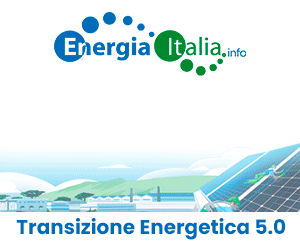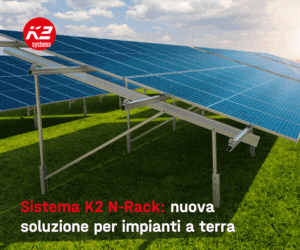Let’s have a look at the main innovations introduced into the draft decree of the fifth photovoltaic feed-in tariff approved by the Minister of Economic Development and by the Minister of the Environment, while waiting for the opinion of the Unified State-Regions Conference and the scenarios that could open in the sector (see draft of decree).
Incentive volumes
For the quota for the incentives, the new decree fixes a ceiling of 100 million per six-month term, assigned by entry on registers. The fifth feed-in tariff identified 5 six-month terms starting from the date on which the decree enters into force; for each term, the incentive tariffs are granted for systems up to an annual indicative cost of 80 million (10 million more for photovoltaic systems integrated with innovative features and concentrated photovoltaic systems). The new feed-in tariff will issue a total of 500 million euro in two and a half years.
Timing
The fifth feed-in tariff restricts its application to reaching the accumulative annual cost of the incentives of 6 billion euro (now 5.6 billion). The exact date on which this cost is reached will be established by resolution of the national Energy Authority; the new tariff will be applied 30 days after the resolution, but in any case not before 1st July 2012. On the same date, the validity of the fourth feed-in tariff will lapse, except in the case of the very large systems entered on the registers in time.
The application rules of the GSE (Italian government-owned company promoting renewable energy) for entry on the new registers must be published in the following 30 days, while the actual term for registration must be operative after another 10 days and will remain open for the successive 60 days. The successive registration periods must be held at six monthly intervals.
Very likely the six billion will not be reached quickly. The Minister, on the indication of the GSE, estimates the most probable date between July and October.
Priority criteria
The introduction of the registers calls for the definition of priority criteria to determine the classification of the systems that qualify for the incentive. Unlike in the past, we now find among the first priority criteria the adoption of systems that until today benefitted from premiums on the tariff. In fact, a system on buildings with an energy class of D or more will be a preferential condition, especially in the case of the replacement of an asbestos roof or if built on contaminated sites or exhausted waste dumps. Farms are also granted preference in the case of systems up to 200 kW, and to towns with fewer than 5,000 inhabitants. These are followed by systems on greenhouses, pergolas and acoustic barriers. Little importance, however, will be given to obtaining the authorisation qualification, the lower power of the system, and the date of entry on the register.
Only for the first register, to protect systems in an advanced state of construction, the first criterion considered will be the precedence of the date on which the system will start operating. The priority (fifth place) given to the criterion for systems that have applied for a 5% reduced tariff, compared to that in force, is curious.
An exception are systems under 12 kW which will continue to have direct access to the incentive tariffs without the need for entry on the register. However, to guarantee effective control of the volumes for which the incentives can be granted, the cost sustained for the incentives of such systems will, in any case, be deducted from the indicative annual cost of the six-month terms after the first. Therefore only the register of the first six-month term will be able to allocate systems for a total of € 80 million. In the successive terms, this expense limit will be reduced by all the very small systems (< 12 kW) which do not depend on the entry on any register.
Take note! The new requisites required of responsible subjects and systems, art. 7, paragraph 2, introduces a lethal rule. An indispensable requisite for the “other systems” category will be having obtained authorisation within the date of the entry into force of the fifth feed-in tariff. The systems excluded by this criterion are only those constructed on buildings holding energy certification, constructed in total replacement of roofs containing asbestos, or constructed on greenhouses, pergolas, rural buildings, acoustic barriers, canopies and cantilever roofs, constructed in exhausted waste dumps or contaminated sites or, lastly, constructed within the terms of and conforming to art. 65 of Decree Law n° 1 of 24th January 2012 (systems in agricultural areas). All the “other systems”, with authorisation after the date of the entry into force of the decree, shall not have access to the feed-in tariff incentives. The extended family of the “other systems” has therefore little more than one month to obtain authorisation for construction and running.
How many KW are we talking about all together?How many million MW will be absorbed from registered systems in the second six-month term?
The Minister maintains that with the new incentive mechanism it will be possible to install 2÷3 GW of power per year. Having ascertained that the “other systems” category will progressively become increasingly marginal, in the first six months between 500 MW and 800 MW will be installed depending on what the average system size will be. For the successive six-month terms, the amount of the tariffs will allow for an increase of installed power; it can be approximately stated that the total power installed in the two and a half years of the fifth feed-in tariff will vary between 3.9 GW and 4.8 GW. However, it is probable that the incentive granted to systems below 12 kW will push the market towards decidedly small systems, with an inevitable contraction in the power installed towards lower figures.
If the cuts in the tariffs were not to lead to a contraction in this market segment, it is possible that a consistent portion of the volumes made available for the second six-months would be eroded to the advantage of the very small systems which, in the meantime, will have started up: for the systems to be registered in the second six-month term, the risk of being excluded would increase considerably, especially those which cannot satisfy sufficiently high priority criteria.
At this point, diverse scenarios are possible, and the risks connected with obtaining the incentive must be assessed case by case. For example, the costs sustained for the incentives for just over 200 MW of systems producing less than 12 kW would take about half of the 80 million available for the second six-month term.
Incentive tariffs
From the above, the cut in the tariffs seems to be almost the lesser evil. Compared to the fourth feed-in tariffs for the second half of 2012, the average cut is 50% (calculated in respect of the new tariffs contemplated for self-consumption, which do not take into account the energy sale component). A net decrease which takes on different values according to the type and size of the system. Paradoxically, the systems that sustain the smallest cut (34%) are precisely the “other systems” which are small and which will hardly be entered in the registers. At the extreme opposite are the large systems, both those on buildings and the large “other systems”: in both cases, the cuts will be more than 65%.
Lastly, it is worth noting the contribution that all photovoltaic systems will have to devolve to the GSE to cover management costs: no less than 0,1 euro cent per kWh, i.e. 1 euro every MWh produced.
From the first analyses mentioned above, it therefore seems that the new feed-in system, created to lead the sector to grid parity in a context in which costs must be strongly contained, might not be able to adequately sustain the sector.


































